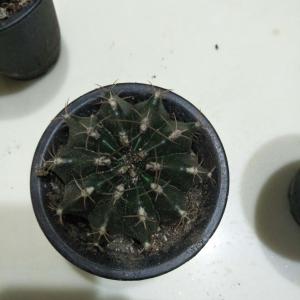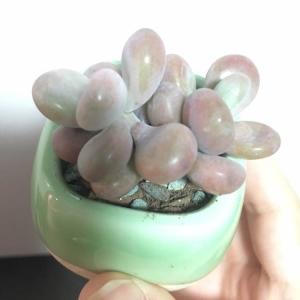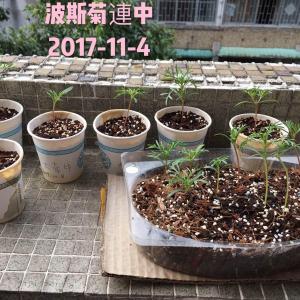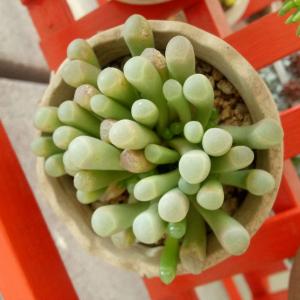文章
Miss Chen
2017年11月15日

You can save and sow seeds from your favorite garden strawberries (Fragaria x ananassa), perennial in U.S. Department of Agriculture plant hardiness zones 3 through 10, but most are hybrid cultivars that won't come true from seed. On the other hand, purchased or saved seeds for wild strawberries (Fragaria spp., USDA zones 4 through 10), or open-pollinated garden types such as "Fresca" (USDA zones 3 through 8) will come true. Sellers also offer seeds of hybrid decorative garden varieties, including "Tarpan" (USDA zones 5 through 8), which are grown for their unusual pink flowers as well as their berries.

Harvest Seeds
To harvest strawberry seeds from their fruits, place four or five berries and 1 quart of water in the pitcher of a blender. After covering the blender, run it on its lowest setting for 10 seconds. Discard any seeds that float to the surface, as they won't be viable, and pour the mixture of water and strawberry pulp through a strainer that has mesh that's fine enough to retain the seeds. Hold the strainer over a sink or place a container beneath it to catch the watery pulp. When the seeds are completely drained, spread them on paper towels and allow them to dry thoroughly.
Stratify Seeds
Store saved or purchased strawberry seeds in a paper envelope inside a covered glass jar or zip-lock plastic bag in the refrigerator until one month before you intend to plant them. If you want to harvest strawberries the same year that you plant their seeds, you must sow the seeds indoors no later than the beginning of February. One month earlier than the planting date you choose, place the jar or bag containing the seeds in the freezer. After the month has passed, retrieve the container from the freezer, and leave it at room temperature overnight before you open it to plant the seeds.
Plant Seeds
Make sure the flowerpot or other container you use for sowing the seeds has drainage holes. After filling it to within 1/2 inch of its rim with damp, sterile seed-starting mix, sow the seeds about 1 inch apart over the surface of the mix. Press them into the surface and leave them uncovered, as they require light for germination. After topping the container with plastic wrap, place it under a grow light set to run for 12 to 14 hours per day or on a sunny -- preferably south-facing -- windowsill. If you keep the container at temperatures between 60 and 75 degrees Fahrenheit, the seeds should germinate within one to six weeks.

Grow Seedlings
For the first month, feed the plants once every two weeks with a fertilizer recommended for seedlings, such as liquid kelp (0-0-1). Use only half the amount specified, which for the kelp would be 1 tablespoon of the concentrate per gallon of water. After one month, you can raise that to the full amount of 2 tablespoons per gallon every two weeks. About six weeks after the seedlings germinate, transplant them into individual 4-inch pots of potting soil. They should be ready to go outdoors after another six weeks. Place the pots in the shade at first, accustoming the plants gradually to more and more sun before you transplant them into the garden, setting them 2 feet apart in well-drained, slightly acidic soil in full sun. Work 1/4 cup of an all-purpose organic fertilizer such as 5-5-5 into the planting hole for each seedling, water them well and mulch them with straw. To stay healthy, the strawberry plants will need at least 1 inch of water per week from rainfall or irrigation.

Harvest Seeds
To harvest strawberry seeds from their fruits, place four or five berries and 1 quart of water in the pitcher of a blender. After covering the blender, run it on its lowest setting for 10 seconds. Discard any seeds that float to the surface, as they won't be viable, and pour the mixture of water and strawberry pulp through a strainer that has mesh that's fine enough to retain the seeds. Hold the strainer over a sink or place a container beneath it to catch the watery pulp. When the seeds are completely drained, spread them on paper towels and allow them to dry thoroughly.
Stratify Seeds
Store saved or purchased strawberry seeds in a paper envelope inside a covered glass jar or zip-lock plastic bag in the refrigerator until one month before you intend to plant them. If you want to harvest strawberries the same year that you plant their seeds, you must sow the seeds indoors no later than the beginning of February. One month earlier than the planting date you choose, place the jar or bag containing the seeds in the freezer. After the month has passed, retrieve the container from the freezer, and leave it at room temperature overnight before you open it to plant the seeds.
Plant Seeds
Make sure the flowerpot or other container you use for sowing the seeds has drainage holes. After filling it to within 1/2 inch of its rim with damp, sterile seed-starting mix, sow the seeds about 1 inch apart over the surface of the mix. Press them into the surface and leave them uncovered, as they require light for germination. After topping the container with plastic wrap, place it under a grow light set to run for 12 to 14 hours per day or on a sunny -- preferably south-facing -- windowsill. If you keep the container at temperatures between 60 and 75 degrees Fahrenheit, the seeds should germinate within one to six weeks.

Grow Seedlings
For the first month, feed the plants once every two weeks with a fertilizer recommended for seedlings, such as liquid kelp (0-0-1). Use only half the amount specified, which for the kelp would be 1 tablespoon of the concentrate per gallon of water. After one month, you can raise that to the full amount of 2 tablespoons per gallon every two weeks. About six weeks after the seedlings germinate, transplant them into individual 4-inch pots of potting soil. They should be ready to go outdoors after another six weeks. Place the pots in the shade at first, accustoming the plants gradually to more and more sun before you transplant them into the garden, setting them 2 feet apart in well-drained, slightly acidic soil in full sun. Work 1/4 cup of an all-purpose organic fertilizer such as 5-5-5 into the planting hole for each seedling, water them well and mulch them with straw. To stay healthy, the strawberry plants will need at least 1 inch of water per week from rainfall or irrigation.
0
0
文章
Miss Chen
2017年11月11日

Pruning grape vines produces a healthy fruit harvest. If you do not prune the grape vines, they will grow too much foliage and not produce fruit. Grape vines are mature when they are at least 3 years of age. Prune your grape vines in the winter months to encourage new growth in the spring. Once you prune the grape vines, you can train them to grow on arbors or trellises so that they do not take over your yard or garden.
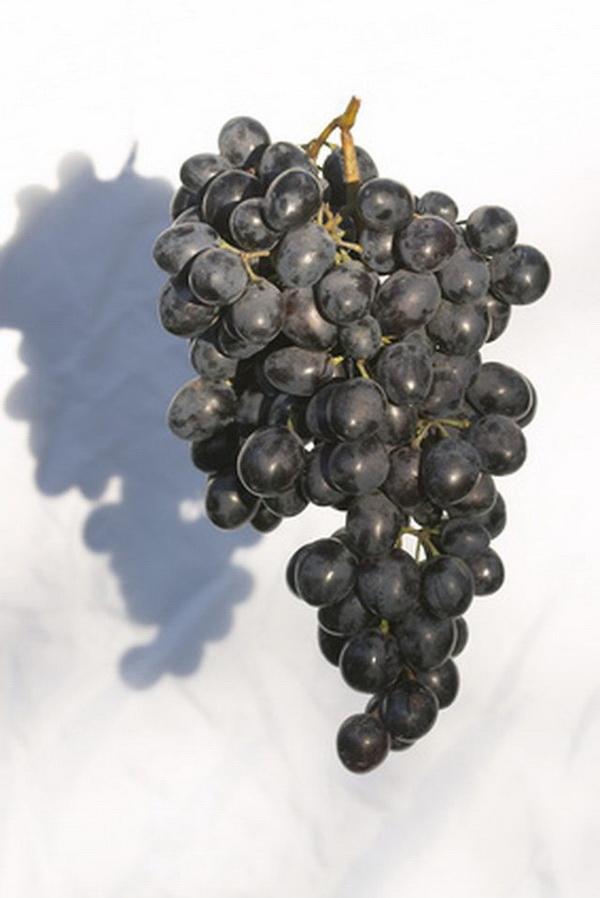
Step 1
Remove leaves on the ground around the grape vine. This will prevent insects and birds from invading the grape vines and keep the vines healthy.
Step 2
Prune away any tangled vines. The tangled vines will prevent the grape vine from producing grapes. Place the tangled vines in a compost bin or trash bag.
Step 3
Remove shoots growing between the trellis wires. This will encourage the vines to continue to grow on the wires. Cut these shoots at the base near the main stem.
Step 4
Cut away secondary shoots, also known as suckers, from the main cane's base. The suckers take energy away from the grape vine.

Step 5
Prune the canes to leave four on each side of the vine. Keep two young canes on each side that appear shiny and smooth to keep the grapevine producing fruit. Remove older canes when they begin to crack and peel.
Step 6
Prune the spurs on the main canes. Leave two to three of the bud spurs. Prune them by spacing them apart 4 to 6 inches.

Step 1
Remove leaves on the ground around the grape vine. This will prevent insects and birds from invading the grape vines and keep the vines healthy.
Step 2
Prune away any tangled vines. The tangled vines will prevent the grape vine from producing grapes. Place the tangled vines in a compost bin or trash bag.
Step 3
Remove shoots growing between the trellis wires. This will encourage the vines to continue to grow on the wires. Cut these shoots at the base near the main stem.
Step 4
Cut away secondary shoots, also known as suckers, from the main cane's base. The suckers take energy away from the grape vine.

Step 5
Prune the canes to leave four on each side of the vine. Keep two young canes on each side that appear shiny and smooth to keep the grapevine producing fruit. Remove older canes when they begin to crack and peel.
Step 6
Prune the spurs on the main canes. Leave two to three of the bud spurs. Prune them by spacing them apart 4 to 6 inches.
0
0
文章
Miss Chen
2017年11月10日

Adventurous Arizona gardeners don't let the state's challenging conditions keep plump, juicy strawberries (Fragaria spp.), hardy from U.S. Department of Agriculture plant hardiness zones 3 through 10, from their planting lists. The diverse climate and soils simply mean that strawberries need some extra TLC. Growing zones in the state stretch from USDA zones 4b through 10, with average winter lows ranging from minus 25 degrees Fahrenheit to 40 F. Whatever your region, proper planting gets Arizona strawberries started right.

Site Selection
Even in Arizona's low desert, unexpected frosts can damage tender strawberry blossoms and steal spring crops. The earliest flowers produce the largest berries, so protection is important.
Plant strawberries on elevated slopes, where cold air drains away and lessens chances of frost damage. Cooler, north-facing slopes generally prompt later blooms, which gives an added buffer against bloom loss.
Strawberries fruit best in full sun locations, but low-desert berries need protection from intense sun. Locations near homes provide frost protection, but avoid west-facing walls that reflect Arizona heat.
Soil Adjustments
Strawberries prefer well-drained, low-saline, organic soil with neutral to slightly acidic pH near 6.5. Most Arizona soils are alkaline and saline, with little organic matter. Without adjustments, strawberries suffer nutrient deficiencies.

Test your soil, and follow test recommendations explicitly. Most Arizona gardens need pH lowered for strawberries, but some have acidic soil. Because Arizona soils contain calcium carbonate, common pH-lowering products, including sulfur, don't often work. Using the wrong amendments or the wrong amounts can leave soil toxic. Don't guess; test.
Layer 2 to 3 inches of organic compost over the planting bed, along with 1 pound of 12-24-12 fertilizer per 100 square feet. Wear protective clothing, including gloves and goggles, and mix the layers in 8 inches deep. Avoid manure-base compost, which may add salts.
Planting Time
Plant Arizona strawberries in late winter or spring, after the last average frost date for your region passes. In Arizona's low desert, this happens in February. Mountain regions wait until June.
Trim roots to about 6-inch lengths, and keep them moist at all times. Use sharp garden scissors or pruners, and sterilize the blades with household disinfectant before and after you trim.
Planting depth is critical. Bury roots, but keep the plant's crown exposed at the soil's surface. Planted too low, strawberries rot. Planted too high, crowns dry out. Space strawberry plants at 12- to 18-inch intervals, and water them thoroughly.
Initial Care
Remove all flowers the first season, so strawberries focus on roots, not fruits. When new growth begins, broadcast 1/2 pound of 21-0-0 ammonium sulfate per 100 square feet. Wear protective clothing, and scratch the fertilizer in lightly; leave roots undisturbed. Water thoroughly, washing any fertilizer from leaves.
Drip irrigation suits Arizona strawberries. Overhead watering promotes disease, fuels weed growth and wastes water to evaporation. A layer of organic mulch, such as pine needles or straw, helps retain soil moisture, inhibit weeds and keep soil cool.
Strawberry roots generally stay in the soil's top 6 inches. The shallow roots need consistent moisture of at least 1 inch per week. Water every three to five days, with up to 2 inches of weekly water during hot weather.
Berry Selection
With Arizona's diversity, match berry types to elevation. Strawberries fall in three main groups: June-bearing, everbearing and day-neutral.
Runner-producing June-bearing strawberries flower and fruit early. If frost nips them, your crop is lost. They suit lower, warmer elevations with few late frosts. Cold-hardy, Minnesota-developed "Mesabi" June-bearing strawberry (Fragaria x ananassa "Mesabi," USDA zones 3 through 8) does well in high-pH Southwest soil.
Multicrowned everbearing strawberries have few runners, but produce smaller crops in spring and fall. Autumn harvest still follows if spring frost hits, but everbearers struggle in low-desert heat. Higher, cooler elevations suit them best, but offer shorter growing seasons. Vigorous "Ogalla" everbearing strawberry (Fragaria x ananassa "Ogallala," USDA zones 3 through 9) withstands arid conditions well.
Day-neutral strawberries flower and fruit all growing season, with fewer runners and smaller berries. Their flowers fail once temperatures go above 70 F. They do best in Arizona's foothills and moderate elevations. Disease-resistant "Tribute" day-neutral strawberry (Fragaria x ananassa "Tribute") tolerates alkaline soil and does well in short growing seasons.

Site Selection
Even in Arizona's low desert, unexpected frosts can damage tender strawberry blossoms and steal spring crops. The earliest flowers produce the largest berries, so protection is important.
Plant strawberries on elevated slopes, where cold air drains away and lessens chances of frost damage. Cooler, north-facing slopes generally prompt later blooms, which gives an added buffer against bloom loss.
Strawberries fruit best in full sun locations, but low-desert berries need protection from intense sun. Locations near homes provide frost protection, but avoid west-facing walls that reflect Arizona heat.
Soil Adjustments
Strawberries prefer well-drained, low-saline, organic soil with neutral to slightly acidic pH near 6.5. Most Arizona soils are alkaline and saline, with little organic matter. Without adjustments, strawberries suffer nutrient deficiencies.

Test your soil, and follow test recommendations explicitly. Most Arizona gardens need pH lowered for strawberries, but some have acidic soil. Because Arizona soils contain calcium carbonate, common pH-lowering products, including sulfur, don't often work. Using the wrong amendments or the wrong amounts can leave soil toxic. Don't guess; test.
Layer 2 to 3 inches of organic compost over the planting bed, along with 1 pound of 12-24-12 fertilizer per 100 square feet. Wear protective clothing, including gloves and goggles, and mix the layers in 8 inches deep. Avoid manure-base compost, which may add salts.
Planting Time
Plant Arizona strawberries in late winter or spring, after the last average frost date for your region passes. In Arizona's low desert, this happens in February. Mountain regions wait until June.
Trim roots to about 6-inch lengths, and keep them moist at all times. Use sharp garden scissors or pruners, and sterilize the blades with household disinfectant before and after you trim.
Planting depth is critical. Bury roots, but keep the plant's crown exposed at the soil's surface. Planted too low, strawberries rot. Planted too high, crowns dry out. Space strawberry plants at 12- to 18-inch intervals, and water them thoroughly.
Initial Care
Remove all flowers the first season, so strawberries focus on roots, not fruits. When new growth begins, broadcast 1/2 pound of 21-0-0 ammonium sulfate per 100 square feet. Wear protective clothing, and scratch the fertilizer in lightly; leave roots undisturbed. Water thoroughly, washing any fertilizer from leaves.
Drip irrigation suits Arizona strawberries. Overhead watering promotes disease, fuels weed growth and wastes water to evaporation. A layer of organic mulch, such as pine needles or straw, helps retain soil moisture, inhibit weeds and keep soil cool.
Strawberry roots generally stay in the soil's top 6 inches. The shallow roots need consistent moisture of at least 1 inch per week. Water every three to five days, with up to 2 inches of weekly water during hot weather.
Berry Selection
With Arizona's diversity, match berry types to elevation. Strawberries fall in three main groups: June-bearing, everbearing and day-neutral.
Runner-producing June-bearing strawberries flower and fruit early. If frost nips them, your crop is lost. They suit lower, warmer elevations with few late frosts. Cold-hardy, Minnesota-developed "Mesabi" June-bearing strawberry (Fragaria x ananassa "Mesabi," USDA zones 3 through 8) does well in high-pH Southwest soil.
Multicrowned everbearing strawberries have few runners, but produce smaller crops in spring and fall. Autumn harvest still follows if spring frost hits, but everbearers struggle in low-desert heat. Higher, cooler elevations suit them best, but offer shorter growing seasons. Vigorous "Ogalla" everbearing strawberry (Fragaria x ananassa "Ogallala," USDA zones 3 through 9) withstands arid conditions well.
Day-neutral strawberries flower and fruit all growing season, with fewer runners and smaller berries. Their flowers fail once temperatures go above 70 F. They do best in Arizona's foothills and moderate elevations. Disease-resistant "Tribute" day-neutral strawberry (Fragaria x ananassa "Tribute") tolerates alkaline soil and does well in short growing seasons.
0
0
成长记
akbrown
2017年11月08日

he’s turning purple! day 3 under grow light.






2
1
Lucky Coyote:@akbrown Oh, thank you so much
akbrown:@Lucky Coyote very well!!
Lucky Coyote:do grow lights work well for your succulents?








